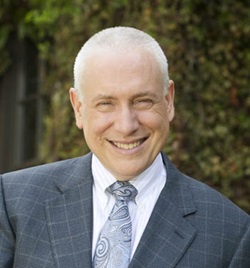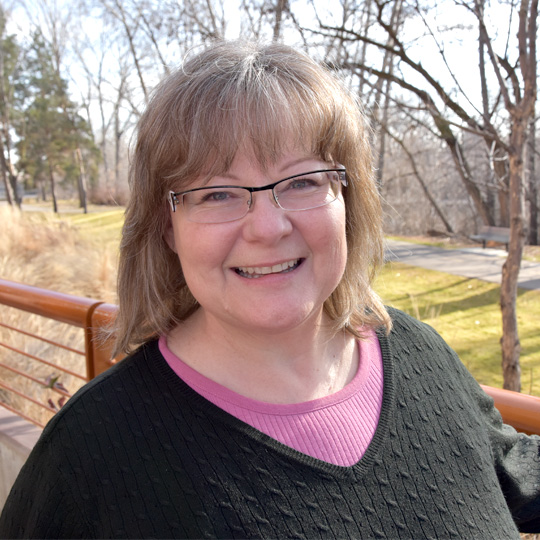Dr. Pate’s Prescription for Change
St. Luke’s Social Media Supports the Health of People in Our Region – Halfway Around the World


St. Luke’s uses social media to connect to our communities and to share news and information.
Social media serves as a critical component of our efforts around community health and population health management. But social media increasingly also is the vehicle by which we are making individual impacts on issues around health and services patients need.
Here is a fascinating post you won’t want to miss by today’s guest blogger, St. Luke’s Health System Communications Coordinator Sandra Wurdemann.
- David C. Pate, M.D., J.D.
Facebook, Instagram, and other social media platforms are strengthening St. Luke’s connections with people in Idaho and abroad, giving us powerful ways to collaborate with patients, physicians, and staff members on things that matter most to them.
For Ketchum resident Jeff Wirtanen, a St. Luke’s “like” on Facebook from halfway around the world provided a lifeline when he confronted a sudden, serious health situation.
Earlier this month, Wirtanen suffered a clot in a deep leg vein after the long flights from Idaho to Bali. Instead of the lengthy, relaxing vacation he’d planned, he wound up in the island hospital, where he was prescribed a blood thinner.
The diagnosis ruined his vacation, he said. Worry over his condition and the side effects of the medication kept him from enjoying the beaches and activities. He decided to end his trip three weeks early.
“My biggest concern was getting home safely from Bali and getting an appointment as soon as possible,” Wirtanen said. “I had been placed on a heavy drug and was a little concerned that I missed something with the language barrier.”
With no international cell phone service in Bali and no primary care doctor in Idaho, he turned to the Web.
“I was trying to schedule an appointment via the St. Luke's website when I noticed a link to Facebook,” he said. “So I ‘liked’ St. Luke's, then sent a message regarding my health situation in Bali.”
Wirtanen’s message was answered within a half-hour by Brent Boyer, who oversees St. Luke’s social media program. Boyer put him in touch with Joy Prudek, communications coordinator at St. Luke’s Wood River.
Prudek was able to share advice from Wood River’s Emergency Department physician, Dr. Deb Robertson, and to coordinate a doctor’s appointment for Wirtanen, timed for his return to the area.
“I was more than happy when Brent and later, Joy, helped answer my random questions,” he said. “It was reassuring to know they weren't just giving me canned answers and were actually listening to my concerns. I was super happy simply knowing it wouldn't be a problem getting an appointment the moment I returned home to make sure I was on the right path.”
St. Luke’s has maintained a social media presence for several years, but is seeing an expansion in the ways the channels are viewed and used. St. Luke’s uses Facebook, Twitter, Instagram, YouTube and blogs to share news and information about health, wellness, and developments at St. Luke’s locations and within St. Luke’s Health System.
Commitment to social media is paying off in steadily increasing ‘likes’ and engagement. In late October:
- Facebook page “likes” hit a new high, of more than 6,500.
- The St. Luke’s Health System Facebook page and its posts reached more than 160,000 people during the month.
- The unique number of people who commented, shared or clicked on posts climbed above 4,500.
Wellness content that arms people with useful information is a core element of St. Luke’s social sharing.
“It could be daily health care tips via Twitter—taking the stairs at work, making healthy lifestyle choices that can have a tangible effect on their family,” Boyer said. “It’s not always about the kind of procedures we offer or the technology we have. It’s providing people information that can improve their health, regardless of whether they need to seek us out for specific medical issues.”
Social media also allows St. Luke's to respond quickly with need-to-know information.
The American Cancer Society made international headlines in October when it updated its breast screening guidelines for women. With input from Dr. Dan Zuckerman, executive medical director of St. Luke’s Mountain States Tumor Institute, Boyer quickly posted news of the new guidelines and Dr. Zuckerman’s perspective to St. Luke's social media platforms. Dr. Zuckerman appeared later that day on local news station KTVB to further discuss the mammography and breast exam guidelines.
The times he is able to connect an individual with the resources they need are most fulfilling, Boyer said. Along with Wirtanen, two other people in faraway places reached out to St. Luke’s through social media in October.
A father outside the U.S. who is moving to Boise reached out through Facebook to find services for his child who has a significant condition. Boyer got a translator involved to ensure good communication in hopes of connecting the family with St. Luke’s Children’s for seamless service through their transition.
And a summer visitor from a different country who had needed to be seen in a St. Luke’s emergency room sought help with the billing process after returning home. She contacted St. Luke’s through Facebook, and Boyer connected her with resources to work through the billing.
Users of St. Luke’s social media have been drawn not only to the accessibility of resources, but to the variety of content.
Recent popular posts have featured a donation of knitted items made by Idaho inmates; video that captured the moment St. Luke’s Meridian and Boise medical center nurses were officially notified that they had earned the prestigious Magnet designation for nursing; coverage of St. Luke’s Nampa groundbreaking; the surprise celebration for a former St. Luke’s nursing student decades after she left to start a family; recognition of St. Luke’s retirees who gathered for a special lunch; and information about the effects of drinking alcohol during pregnancy.
Healthcare organizations need to take social media seriously, not only as an avenue for informing the public but also as a tool for receiving comments and queries, Boyer said. Those who don’t are missing great opportunities.
“If they reach out to us that way, then that’s their preferred method of communicating with us,” he said. “And if we want to have good customer service, then we have to connect with them in the way they prefer.”
About The Author

Sandra Forester works in the Communications and Marketing department at St. Luke's.


